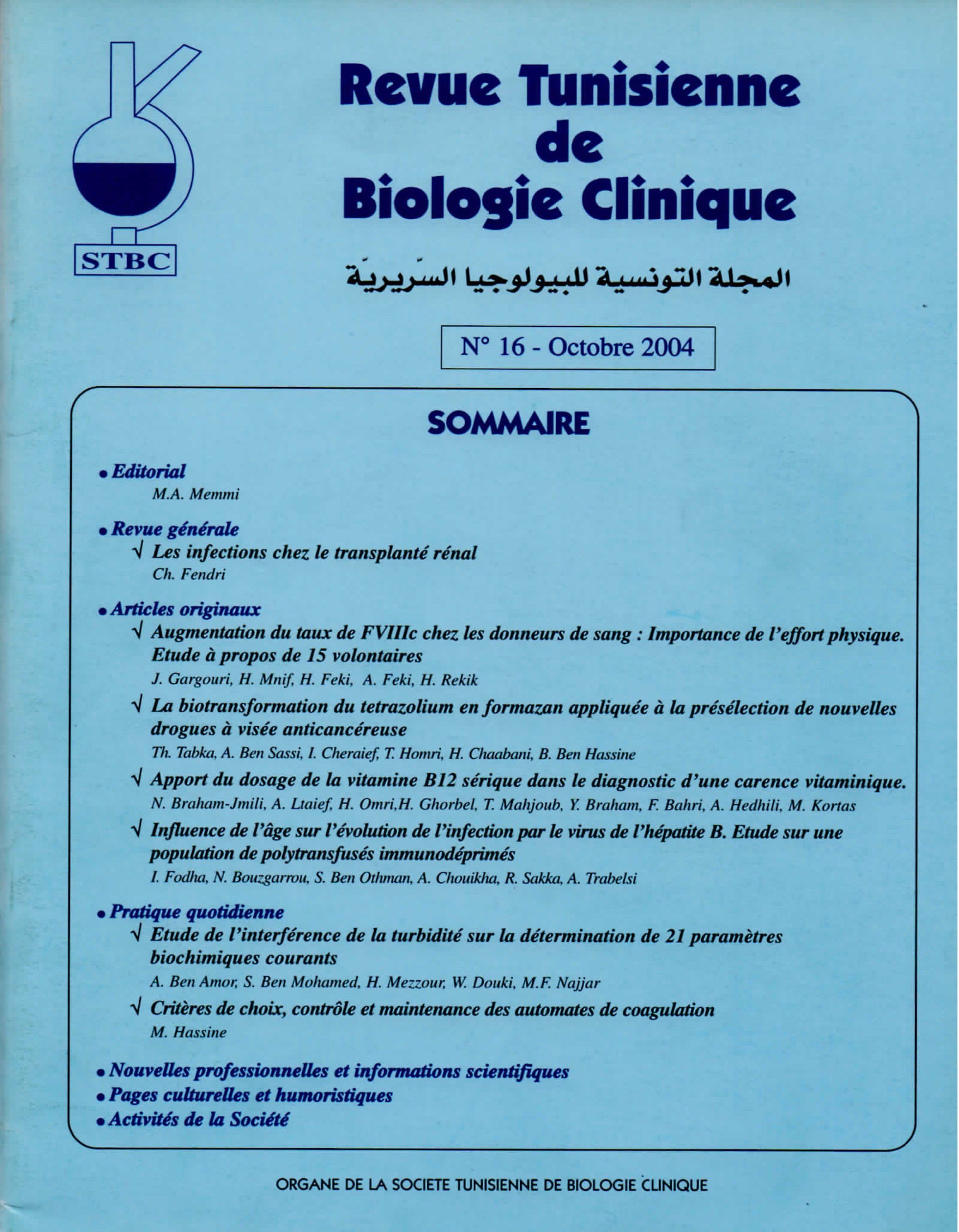Abstract
Transfusion management of hemophiliacs A requires large quantities of factor VIII. In Tunisia, cryoprecipitates derived from blood donations play a predominant role in this management. However, despite improvements in viral marker detection techniques, there remains a residual risk of contamination. It is therefore necessary to increase the concentration of cryoprecipitates in factor VIII, which reduces the number of cryoprecipitates needed for the treatment of the same patient and, consequently, the residual risk. Our study aimed to investigate the effect of quantified physical activity on the factor VIII level of 15 donors. This was made possible through the use of an ergometric cycle. Two protocols imposing two levels of effort were used (A: 15 minutes at 30-40 km/h and B: 15 minutes at 30-40 km/h with a 10% slope). The analysis of the results showed a significant increase in factor VIII after exercise (+9.92%, on average, for protocol A and +48.86%, on average, for protocol B). However, the application of such a protocol to voluntary blood donors remains challenging.

This work is licensed under a Creative Commons Attribution 4.0 International License.
Copyright (c) 2004 Revue Tunisienne de BIOLOGIE CLINIQUE

